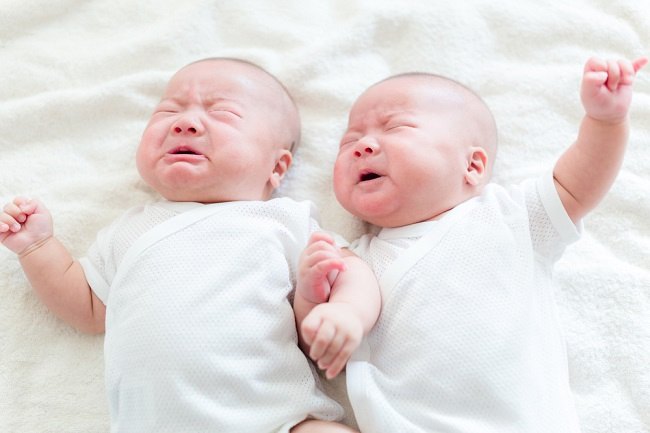Identifying Identical and Identical Twins
Why are there twins but not similar to each other ? Maybe a question like this has crossed your mind. The reality is that not all twin pairs have the same look, alias twins identical. How come? This is why there is a pair of identical and not identical twins.
According to medical science, identical twins are not based on the number of eggs and sperm cells that play a role in conception and how they grow in the mother's womb.

Twins I flick
Identical twins occur when one sperm cell fertilizes one egg cell. The fertilized egg then divides into two. The result is a twin fetus identical to the same gene or DNA, as it comes from one egg cell and one sperm cell. Therefore, identical twins always have the same sex (female or male), their faces look very similar, and usually share one common placenta in the uterus.
Twins T not I flick ( K emboss F raternal)
Do you know if identical twins are more common than identical twins. About 2/3 cases of twins are not identical twins. This one twin occurs when two eggs are fertilized by two sperm cells. This is what makes the faces of twin pairs not identical different. In addition, fraternal twin pairs also do not have the same genes, can be born with different sex (male-female), and have their own placenta.
Factor P support A child K emboss
About 1 in 250 women have the chance to have twins. There are several factors that allow you to conceive identical or identical twins, namely:
- Age of pregnant mother
Pregnant women aged 30-40 years have higher levels of estrogen hormone than younger women. This means that their ovaries can produce more than one ovum during ovulation. If at least two of these eggs are fertilized, it will contain twins not identical. - Descendants
Containing fraternal twins is more likely in pregnant women with fraternal twins or family history with fraternal twins. While identical twins do not decline in the family. Even experts to date have not figured out why identical twins can happen. - Number of previous pregnancies
If you've ever been pregnant before, the chances of pregnant women have twins getting bigger. - Race
Women from the Central African region (mainly Nigerians) are most likely to have twins, while women from the East Asian and South American regions are seen to have the lowest rates of twin pregnancies. - Helpful reproduction method
IVF or IVF can increase the chances of conceiving twins, as more than one embryo is injected into the uterus while undergoing this procedure. - Maternal body shape
Fraternal twins are more commonly experienced by pregnant women whose posture is higher than that of a body. So far it is not known what is the exact link between the height of pregnant women and the rate of twin pregnancy, but the nutritional factors of pregnant women are suspected of having a role.
The risk and the level of hassles when pregnant or having twins, be it identical twins or fraternal twins, will surely be greater. Therefore, if you want to have twins or are pregnant with twins, routinely consult your midwife or obstetrician to keep your child and mothers healthy.